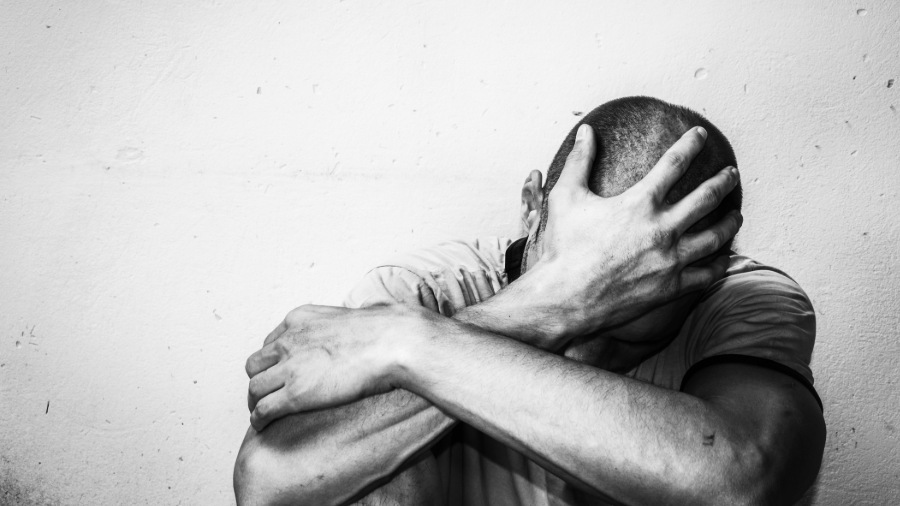The Forgotten Pandemic
Nearly 550 die every day from drug or alcohol overdoses. Why aren't we talking about this pandemic?

Chris Stephens had his first joint at 10 years old. “By the time I was 20, I was dealing heavyweight coke. I had needle tracks up both arms. I shot it, I snorted it, I popped it. I did whatever you could do and by 22, I knew how deep the rabbit hole actually went.” Stephens tells his story in the new documentary The Forgotten Pandemic, which can be seen at TheForgottenPandemic.com.
The Forgotten Pandemic highlights drug and alcohol addiction in the United States. It reveals just how much of a problem it is — a pandemic, say the men in the film. Nearly 550 people in America die every day from drug or alcohol overdoses. The men in the film bravely tell their own stories of addiction and recovery. For all of them, finding Christ was the answer to their addiction problem. Some of them met Him through Christ-centered rehabilitation programs, like Spring 2 Life Ministries (S2L).
Not a Surprise
“Addiction is not a surprise to God,” Pastor Adam Comer told The Stream in a recent interview. Once a patient, Comer is now the CEO of S2L, a Christ-centered residential recovery program for men. It’s located in middle Tennessee, just outside of Nashville. The curriculum, which comes directly from 2 Peter 1, is called Lost and Found. All of S2L’s resources are available for churches who wish to start a recovery ministry. “We feel like if we can help train other nonprofits, other Christ-centered places to do this, it will benefit everyone.”
A Major Problem
According to Comer, who referenced a 2020 study, drug overdoses spiked 30% over the previous year. “So it went from roughly 70,000 overdose deaths to 93,000 overdose deaths, just in 2020.” That’s more than the deaths from the Vietnam War. “That doesn’t include alcohol-related deaths, whether it be [drunk] driving or liver or poisoning of alcohol or suicide related to alcohol, any of those things. The pandemic is a major problem and … it feels like it’s a forgotten pandemic.”
The Revival of a Nation
One of S2L’s beliefs is “from the rooms of recovery to the revival of a nation.” “And we believe that God is calling us to spark a revival — not S2L, but just people that have gone through addiction and God saved them: ‘Man, I don’t care what anyone thinks anymore. I’ve been in the pit and I’ve seen the goodness of God and I’m going to proclaim it.’ And that’s the movement that we feel. And we feel like He’s given us a platform to do that.”
Christ at the Center
Comer stresses that Christ must be the center of recovery programs. He’s been asked to speak at conferences where an expert will talk about the brain disease of addiction. “Then they’ll call me up to talk about the biblical [view] of addiction. I think the brain is designed to serve the soul. And if we get that backwards, they get that backwards, which I think the secular world is, then we die a thousand intellectual deaths without any absolute standard of truth.”
Image Bearers of Christ
Christ-centered recovery programs see people made in the image of God. “So, they have value right out of the gate.” He advises people not to call themselves addicts. “It’s not who you are. The things you’ve done does not define you. … God calls us saints. If you’re in Christ, you’re a new creation. Don’t identify and tie yourself to that. There is absolute freedom from it. And that’s the difference. It’s not a lifelong ailment that you’re always chained to. There’s freedom from it.”
“God calls us saints,” Pastor Bruce Stanley said in the film. “He calls us image bearers of who He is and how dare I go around calling myself even a sinner! I’ve been saved by grace.”
You Can Walk in Freedom
The takeaway from the film is hope. “You don’t have to be this and there’s freedom and you can walk in freedom. Here’s people who have done it,” said Comer. The secular programs, after 60-70 years only see a 12% success rate, while Christ-centered programs see more like a 60% success rate. “And so, the takeaway is to be bold from the rooms of recovery [to] the revival of the nation.”
Nancy Flory, Ph.D., is an associate editor at The Stream. You can follow her @NancyFlory3, and follow The Stream @Streamdotorg.







